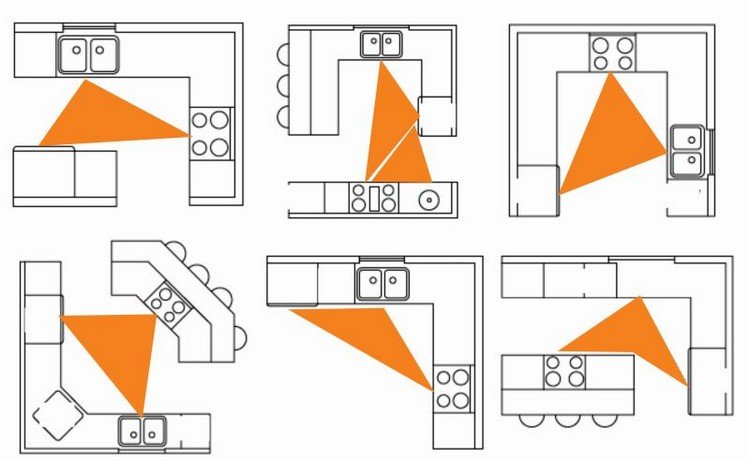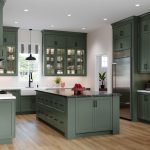square kitchen
For practicality reasons, the right-angled and roughly equilateral quadrilateral is one of the most common shapes in interior design. This type of space organization allows for multiple layouts, some more functional and aesthetic than others. Same for the square kitchen, whose layout can be a real treat, as long as you know the basics. Whether it’s an L-shaped layout, an I-shaped kitchen, U-shaped structures or any other layout, all the possibilities will be explored in the following passages. The square kitchen is a practical and attractive space.
The square kitchen is arguably the epitome of traditional design, which advocates ease of use and visual appeal. Done properly, it should offer you enough room for food preparation and heat treatment and enough storage space to maintain proper order. Bonus points if you manage to add a dining nook, center island, or at least a small kitchen counter for the chef to sit in between cooking stages.
The contemporary “gourmet room” is usually a kitchen that opens into the living room, dining room, or both. Furniture and appliances can be arranged in several different ways, depending on specific architectural data and personal preferences. Logically, each particular arrangement has its own advantages and disadvantages that one must know in order to make an informed choice. Let’s look at some examples!
The square U-shaped kitchen offers a classic layout designed to make the cook’s job easier. Its design optically separates guests from the main kitchen area while also not distracting them too far from the host. On the other hand, this arrangement is only ideal for large spaces and can be a bit claustrophobic when square footage is more limited.
It can be said that the square G-shaped kitchen is the big sister of the U-shaped kitchen. It is perfect for those who want to invest in every square centimeter of usable space in the kitchen, but do not have a central installation location. island or bar. Instead, the fourth functional plane is added at right angles to the side of the U.
Typically, such placement results in a relatively confined space. Of course, this can be an advantage and a disadvantage depending on the perspective you choose. Either way, the square G-shaped kitchen only works for large rooms, or even for open-plan homes where the optical autonomy of the kitchenette is a desirable effect.
Then we have a kind of American kitchen with countertops and storage cabinets in parallel. Unlike previous examples, the square kitchen in II is effective on small surfaces as well as on large ones. The two unrelated in-row units are characterized by the fact that they give you plenty of counter space, together with optimal storage below.

In addition, the parallel kitchen, square or rectangular, ensures that the stove, sink and refrigerator are not only close to each other, but also easily accessible. Which brings us to another very important question…
You’ve probably heard that the sink, cooking zone, and refrigerator make up the so-called “activity triangle.” This is where the traffic in the kitchen is the busiest, so the points of the figure in question must be carefully planned to ensure optimum access without the risk of clogging.
According to interior design experts, the total distance between the three main elements of the triangle should not be less than 3 m or more than 7.5 m. Therefore, such an environment will optimize the time and precision of performing your tasks, regardless of the size of your square kitchen.
Finally, the square kitchen has the potential to be the corner of your dreams. But even state-of-the-art kitchens can look mundane and downright boring if their capacity is misused. For this reason, it is necessary to provide a sufficient number of cabinets, drawers and shelves and to eliminate the disorder suddenly.
































